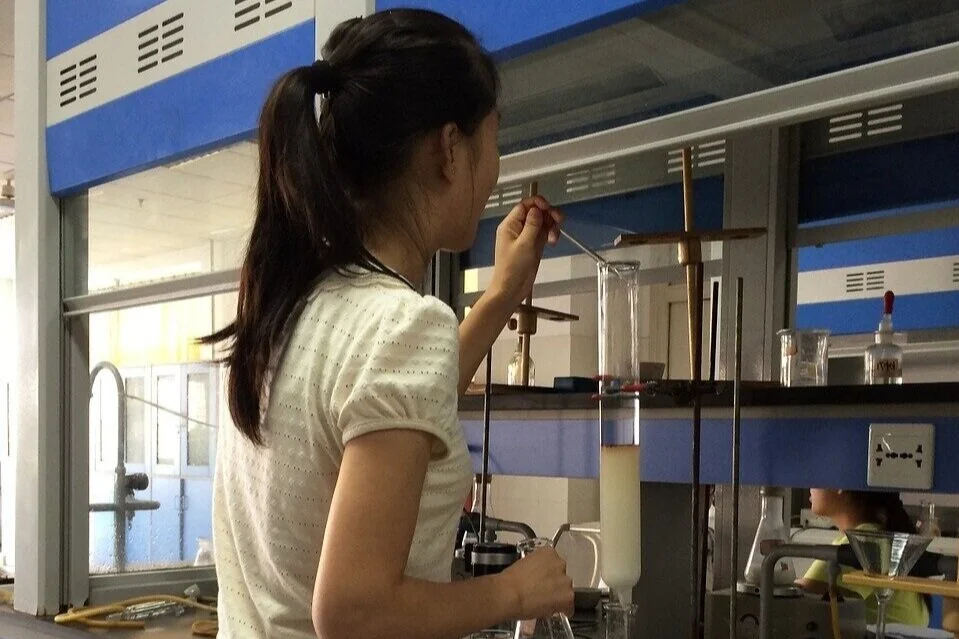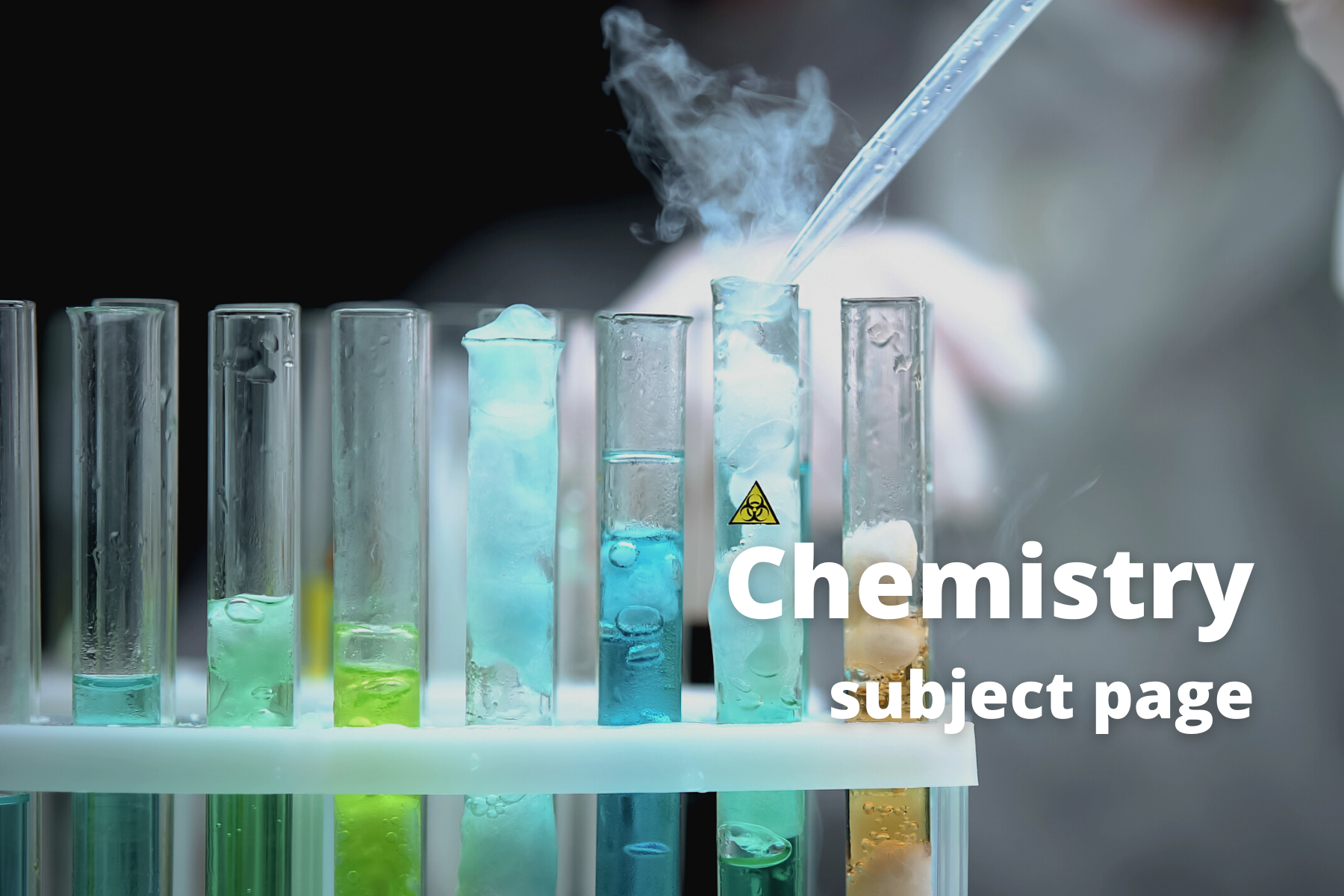50 Ideas for your IB Chemistry IA
You’ve reached that stage in your IB journey where you have to decide what to do for your Chemistry Internal Assessment (IA). Like many IB students, you may be finding it challenging to think of an idea that a) you are really interested in and b) is feasible for you to complete given the time and resources available.
If you are looking for a bit of inspiration to kick your Chemistry brain into gear, check out our list of 50 ideas for your IB Chemistry IA below. These ideas have been extracted from our student guide, Chemistry Internal Assessment Standard & Higher Level, written by experienced teacher and author Dave Allen.
IB Chemistry IA Ideas
The ideas presented here are exactly that ideas, not research questions. The statements are deliberately broad and, if you decide to use any of these ideas, you should be as specific as you can.
Please make sure you show your idea to your teacher before you get too involved in the planning stages as there may be a very good reason why you are unable to carry out your idea.
1. Investigate chemical equilibria (determine Kc for a reaction).
2. Investigate a weak acid-strong base titration (determine the Ka of a weak acid).
3. Investigate the enthalpy change of a redox reaction.
4. Investigate an aspect of a simple voltaic cell.
5. Investigate the Ideal Gas Laws using a data logger.
6. Determine the amount of copper in coins using colorimetric analysis.
7. Analysis of seaweed (seaweed is a good source of Br and I).
8. Investigate the amount of CaCO3 in brown and white eggshells.
9. Compare the percentage of vitamin C in various brands of juice.
10. Investigate the hardness of water from different local sources.
11. Investigate the speed of neutralisation of antacids from different sources.
12. Investigate the kinetics of the bromine clock reaction to determine the order of reaction.
13. Investigate factors affecting electroplating.
14. Investigate factors affecting electrolysis.
15. Investigate the % of chlorine in different bleaches or swimming pool water on different days.
16. Investigate the enthalpy of neutralisation of different acid / base concentrations.
17. Determine the activation energy of iodine-clock reaction.
18. Investigate the effect of pH on the rate of rusting.
19. Calculate the Kw for water at different temperatures by measuring its pH.
20. Investigate factors determining heat of combustion in alcohols.
21. Investigate the level of unsaturation in different oil brands.
22. Investigate the pH of soil.
23. Prepare and test of buffer solutions.
24. Investigate the effects of heterogeneous catalysis on the activation energy of a reaction.
25. Investigate how the hardness of water affects the solubility of salts.
26. Investigate whether oxidation of tea / coffee changes its pH.
27. Investigate the effect of soil pH on the chlorophyll content in plant leaves.
28. Determine the enthalpy change of the thermal decomposition of sodium hydrogen carbonate.
29. Determine the percentage of iron in an iron compound by a redox titration.
30. Determine the solubility of an ionic salt in water by plotting a solubility curve and compare the solubility with its literature value.
31. Investigate the effect of the length a salt bridge has on the dipped voltage produced by a voltaic cell.
32. Investigate a factor influencing retention in paper chromatography of amino acids.
33. Determine the calcium content of milk by EDTA titrations.
34. Determine the concentration of biodiesel produced from fruits by using calorimetry.
35. Investigate the energy densities of fuels versus the bond strength (using a database).
36. Measure the concentration of zinc ions in a dietary supplement.
37. Investigate variables affecting water absorption polymers.
38. Investigate the rate of evaporation of a liquid with respect to its temperature.
39. Investigate the effect of different sacrificial metals on the rusting of iron.
40. Investigate the rate of adsorption of organic acids on charcoal.
41. Investigate the factors affecting the colours of transition metal compounds (through the use of a colorimter).
42. Investigate the factors affecting the rate of reaction between iodine and propanone.
43. Investigate an equilibrium position and Le Chatelier’s principle spectroscopically.
44. Investigate the catalytic abilities of different transition and metal oxides.
45. Investigate the effect of solvents in paper chromatography and thin layer chromatography.
46. Prepare esters.
47. Investigate the solubility of salts (Ksp values).
48. Investigate the equivalence point of weak / strong acids and weak / strong bases.
49. Investigate the esterification of soaps.
50. Investigate the effect of different ionic salts on the freezing point depression of water.
Remember:
You should always get your IA checked out by your class teacher before you carry out any lab work to ensure that your experiment is safe.
Any IA lab should be thoroughly risk assessed by yourself and your teacher should check this risk assessment.
Need more Chemistry IA guidance?
We hope our list has sparked your Chemistry creativity and you are now on your way to developing your Chemistry IA idea. If you find you are in need of a bit more advice on how to successfully complete your Chemistry Internal Assessment, then be sure to check out our student guide for comprehensive guidance on how to plan, execute, and write-up a Chemistry IA that will earn solid marks. For all your other IB Chemistry needs, be sure to visit our IB Chemistry subject page for more resources.


